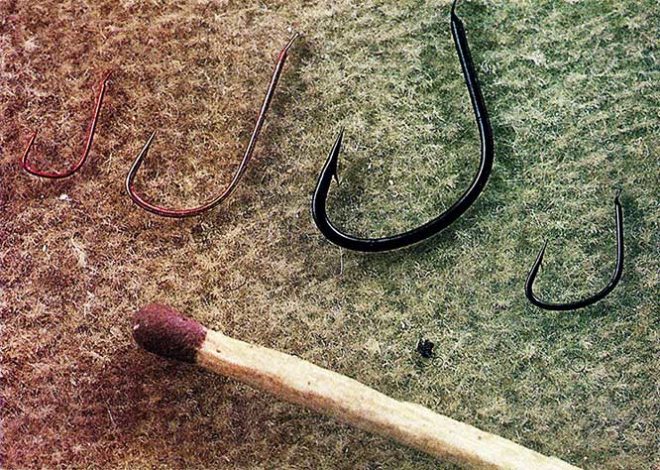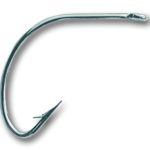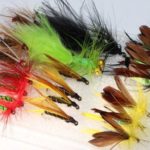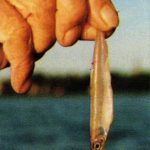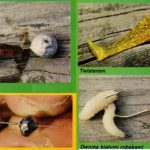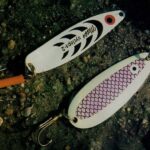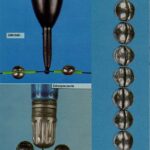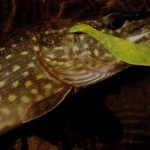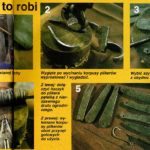Haczyków jest dziś tyle, ile ziaren piasku na plaży. Rudolf upodobał sobie dwa modele haczyków. Jest przekonany, że to w zupełności wystarczy.
Poprawnie przywiązany do żyłki haczyk jest bez wątpienia najważniejszym elementem całej wędki. Haczyk nie tylko musi pewnie wbijać się w pysk ryby, ale także pewnie ją trzymać dopóki nie znajdzie się ona w podbieraku. Kiedy wchodzę do sklepu wędkarskiego rzadko interesują mnie wędziska czy parametry kołowrotków, zawsze natomiast dokładnie przyglądam się haczykom. To przyzwyczajenie, ponieważ już od dawna preferuję tylko dwa modele haczyków. Haczyki te są doskonałe pod wieloma względami, czego niestety nie można powiedzieć o innych rodzajach.
Niezwykła ostrość
Upodobałem sobie czerwone haczyki wyczynowe. Łowię jednak tylko na numery 8 lub 14 (większego haczyka używam tylko do łowienia na żywca lub na martwą rybkę). Zastosowanie tak małego haczyka do łowienia drapieżników podyktowane jest kilkoma względami. Po pierwsze haczyk ten jest bardzo lekki, a więc w niczym nie przeszkadza żywcowi, który zachowuje się w wodzie całkiem „normalnie”. To z kolei oznacza więcej brań i więcej przyjemności przy wyprawach na drapieżniki. Czerwone haczyki są także niezwykle ostre. Jest to bardzo ważne szczególnie podczas łowienia małych ryb, które w momencie zacięcia stawiają niewielki opór i nie ułatwiają haczykowi zadania.
Wszystkie moje haczyki pozbawione są zadziorów (zadzior zgniatam kombinerkami), dzięki czemu zyskuję na czasie podczas odhaczania ryby, a skaleczenie pyszczka jest dosłownie minimalne. Mniejszego haczyka używam głównie do łowienia płoci, brzan i kleni na ciasto (zarówno metodą spławikową, jak i z gruntu). W momencie zacięcia haczyk typu „limerick” z długim trzonkiem doskonale wychodzi z ciasta i pewnie wbija się w pysk ryby. Wydawać by się mogło, że największą wadą tych haczyków jest niezwykle cienki drut, z jakiego zostały wykonane. Możecie mi wierzyć, że podczas łowienia na delikatny sprzęt (wędzisko matchowe i cienka-żyłka), pęknięcie haczyka podczas holu jest prawie niemożliwe. Zalety niezwykle ostrego haczyka uwidaczniają się także podczas łowienia dużych ryb (na przykład miękki kij winkelpicker bardzo osłabia siłę zacięcia).
Wszystkie haczyki „limerick” mają jednak wadę – nie nadają się do łowienia na twarde przynęty. Przynęta taka (na przykład ziarenko grochu) zsuwa się na kolanko haczyka, ostrze w momencie zacięcia nie wbija się dostatecznie głęboko i ryba często się spina podczas holu.
Specjalne wygięcie
Drugi rodzaj haczyka, który preferuję to „wide gap”. Wykonany jest z trochę grubszego drutu, dlatego jest mocniejszy i doskonale nadaje się do łowienia dużych, walecznych ryb, takich jak brzany i karpie. Gruby drut haczyka pozwala też zastosować grubszą żyłkę. I jeszcze jedna zaleta – dzięki znacznemu wydłużeniu ostrego jak igła ostrza, haczyk ten bardzo pewnie wbija się przy zacięciu w pysk ryby.
Żaden haczyk nie jest doskonały. Haczyk „wide gap” też ma swoje wady. Stosunkowo łatwo rozgina się i bardzo trudno wyjmuje się go z pyska ryby, na przykład brzany. Ta ostatnia niedogodność spowodowana jest prawdopodobnie sprężystością materiału – haczyk lekko rozgina się podczas zacięcia i holu, a następnie przy braku obciążenia (ryba w ręku wędkarza) powraca w poprzednie położenie, co znacznie utrudnia odhaczanie. Haczyki „wide gap” doskonale nadają się do łowienia nawet na twarde ziarenka kukurydzy. Ostrze bez trudu wbija się w każdą przynętę. Ziarenko kukurydzy powinno być naciągnięte na trzonek haczyka (aż do samej łopatki) i nie może mieć możliwości przesuwania się. Jeżeli zsunęłoby się w dół, na początek kolanka haczyka przed ostrzem, haczyk może słabo wbić się w pysk ryby lub nie utrzymać dużej sztuki podczas holu. Jeżeli znajdziecie dobry model haczyka radzę kupić od razu opakowanie z całą setką haczyków. Dziesięć lub dwadzieścia haczyków nie wystarcza na długo i często się zdarza, że kiedy chcemy ich dokupić – w sklepie już się skończyły i nie ma ich już nawet w hurtowni.
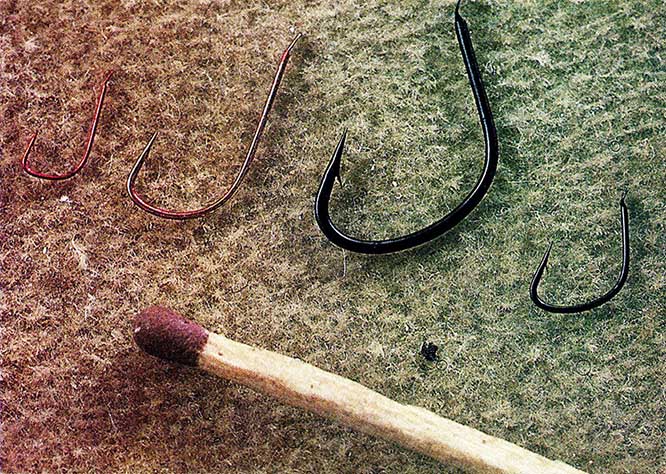 Ulubione haczyki autora na ryby spokojnego żeru: model „limerick” (z lewej) oraz „wide gap” (w dwóch wielkościach). Przywiązanie haczyka z łopatką jest trochę trudniejsze niż haczyka z uszkiem, jednak haczyk taki mniej rzuca się w oczy i jest znacznie lżejszy.
Ulubione haczyki autora na ryby spokojnego żeru: model „limerick” (z lewej) oraz „wide gap” (w dwóch wielkościach). Przywiązanie haczyka z łopatką jest trochę trudniejsze niż haczyka z uszkiem, jednak haczyk taki mniej rzuca się w oczy i jest znacznie lżejszy.
W przypadku omawianych czerwonych haczyków typu „limerick” chodzi o haczyki Gamakatsu (w Niemczech oferowane były dotychczas przez DAM pod numerem 6309; w przyszłości dystrybucja poprzez firmę Zebco – art. nr 4504 luzem, względnie 4704 na przyponach, wielkość 8-18). Haczyki „wide gap” rozprowadzane są w Niemczech przez firmę Balzer (haczyki ze stali płaskiej na ryby spokojnego żeru, art. nr 17067, wielkość 1-14). Podobne modele haczyków oferowane są także przez innych producentów.
